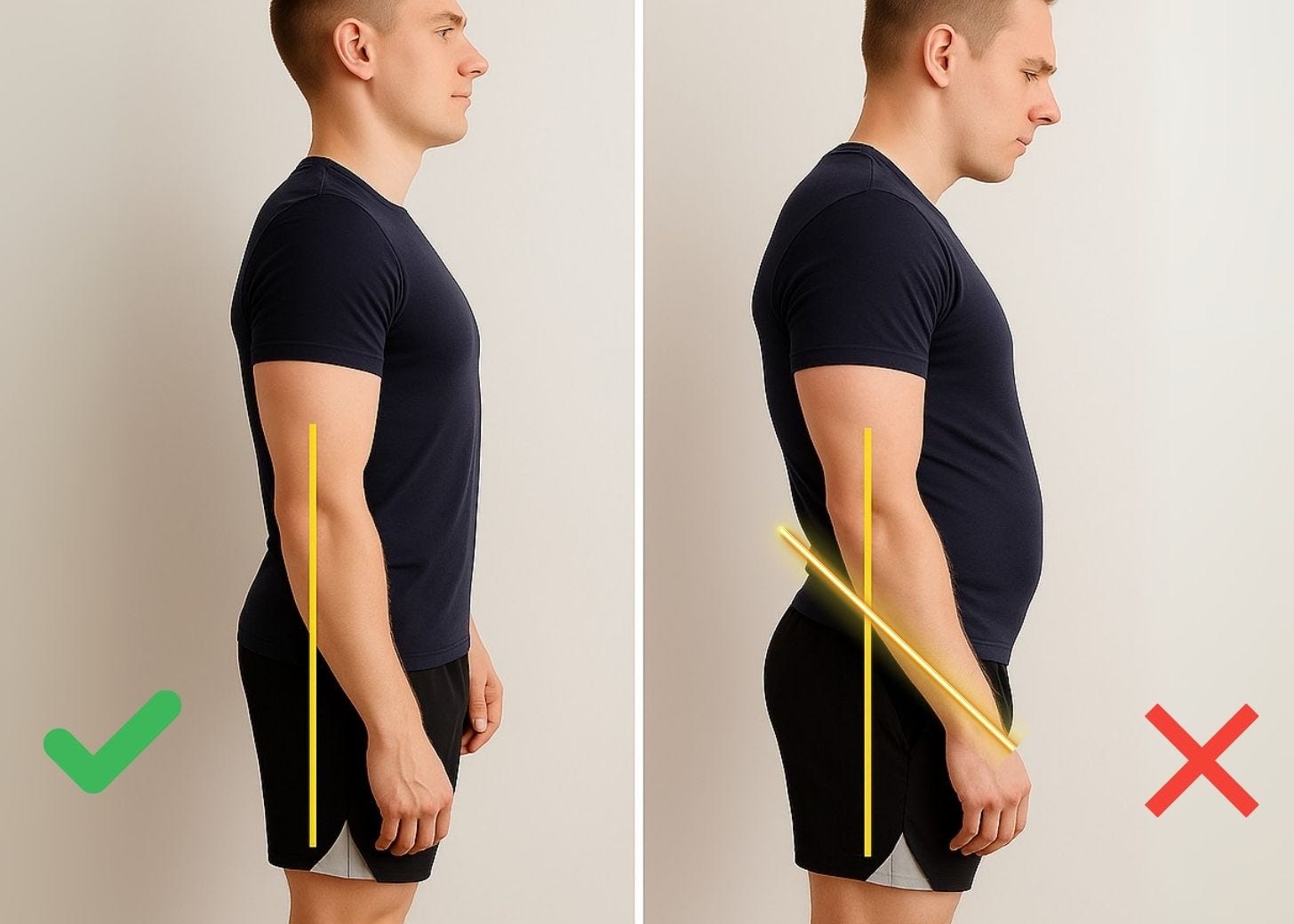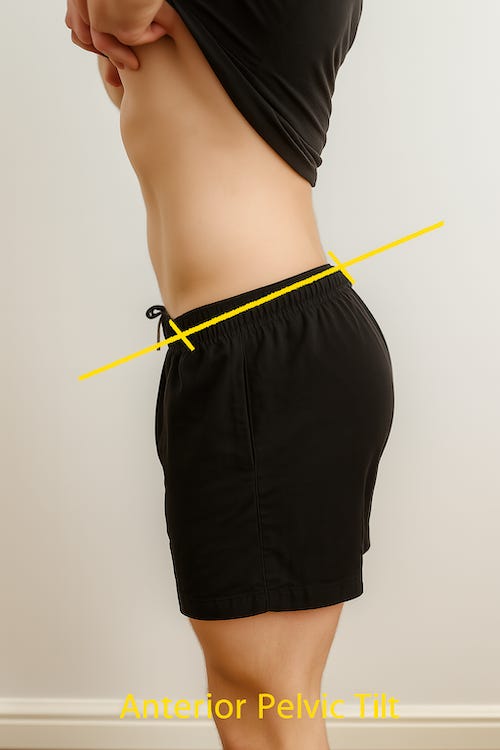How To Fix Anterior Pelvic Tilt
Try These Simple and Effective Exercises, Stretches, and Techniques to Fully Correct and Eliminate Anterior Pelvic Tilt
Ever feel like you’re stuck in your own body? Like no matter how much you stretch, your lower back stays tight, your stomach sticks out, and your hips feel jammed? That’s not just aging or bad luck.
That’s your pelvis screaming for help. And the longer it stays tilted forward, the more everything above and below it falls apart.
This isn’t just about posture. It’s about how you move, how you breathe, how you sleep, and how you show up in the world.
By the end of this post, you won’t just “know” what anterior pelvic tilt is you’ll know exactly how to fix it at the source.
Not with stretches. Not with generic glute bridges. But with a strategy that resets the pattern your body is stuck in.
While most people are still foam rolling their hip flexors, you’ll be resetting the system that controls your alignment in the first place.
The ones who act today will start seeing relief tomorrow while others are still chasing symptoms.
Ready to shift everything from the ground up? Let’s go.
Anterior pelvic tilt (APT) doesn’t just mess with your alignment. It messes with your confidence. It locks your core into dysfunction, turns off your glutes, and tightens your hip flexors until your body forgets how to move like a human being.
Let’s fix that.
What Is Anterior Pelvic Tilt (Really)?
Anterior pelvic tilt is when the front of your pelvis drops forward and down while the back lifts up. You’ll see it as a swayback, a protruding belly, or a chronic arch in your lower back. From the side, it looks like someone stuck a wedge under your spine and forced your hips to tip.
But it’s not just a structural misalignment. It’s a neurological compensation. Your brain is adapting to faulty signals from your feet, your eyes, and your jaw. Your body isn’t broken. It’s doing its best with the bad data it’s getting.
Why This Matters More Than You Think
APT pulls everything out of sync. Your lower back hurts. Your core stops firing. Your glutes go offline. Your hamstrings stretch to their limits and still feel tight. Your neck compensates. Your breathing gets shallow. Your performance tanks. Your sleep gets worse. Your digestion slows down. You feel sluggish and stuck in your own skin.
Here’s what people don’t tell you: You can’t stretch your way out of this. Because the root cause isn’t just in your muscles. It’s in your brain’s perception of where your body is in space.
Test Your Pelvis
Stand in front of a mirror. Find the bony front part of your pelvis on each side (ASIS) and compare them to the bony points at the back (PSIS). If the front sits noticeably lower than the back, your pelvis is tilted.
Now film yourself walking. Does your torso lean forward slightly? Do your hips feel tight? Do your steps look uneven? That’s your nervous system working around the tilt.
What’s Really Causing This
Everyone blames sitting. But sitting is just the trigger. The problem started way before that.
When your foot collapses inward (pronation) on one side, your entire lower chain shifts. The pelvis rotates and tips forward to stay balanced. But the brain doesn’t stop there. It begins reorganizing everything above. Your lumbar curve deepens. Your abdominals lengthen and weaken. Your diaphragm rises. Your breathing changes. Your jaw adapts. Your skull follows.
Add to that any asymmetry in how your teeth touch or how your eyes track the horizon, and the brain does what it must to protect you. It tilts the pelvis. Not to hurt you, but to survive.
This is compensation, not laziness.
This 5-minute reset does what months of stretching and hours of rehab can’t
ittargets the root of your postural dysfunction, not just the symptoms.
Download the full implementation guide and start retraining your system today,
while everyone else is still foam rolling and hoping for change.Why Most Fixes Fail
Most APT advice is mechanical. Stretch your hip flexors. Strengthen your glutes. Squeeze your abs. Do planks.
The problem?
Those muscles are responding to your brain’s interpretation of reality. And if the brain thinks your body is tilted, it will pull you back into the same posture the moment you stop thinking about it.
Until you change the inputs, your outputs won’t last.
What You Can Do Instead







